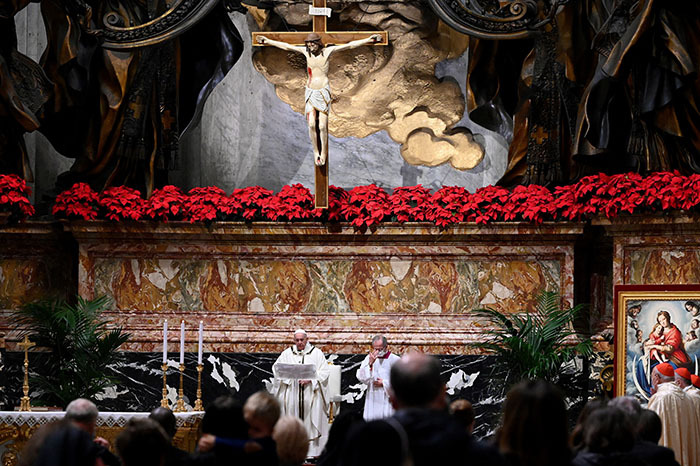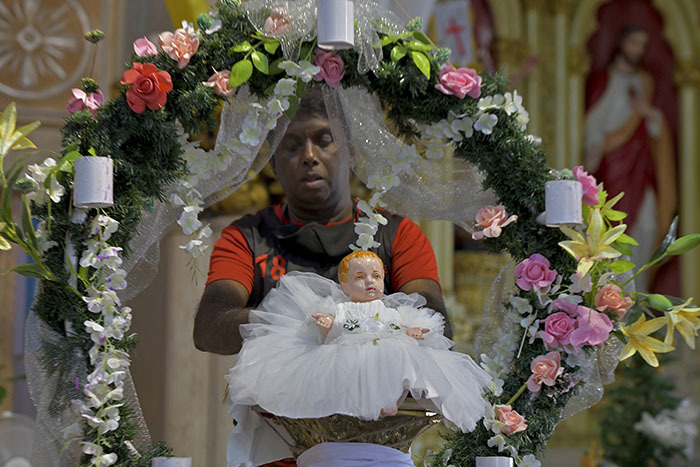Was Jesus born on December 25?
The first recorded date of Christmas being celebrated on December 25 was in 336AD, during the time of the Roman Emperor Constantine, the first Christian Roman Emperor.
CHRISTMAS|JESUS CHRIST|DECEMBER 25TH
The truth is that the month and date of Jesus' birth are unknown.
The church, in the early fourth century, fixed the date as December 25, to correspond to the date of a Roman pagan festival of the sun.
Most Christians celebrate on December 25 in the Gregorian calendar, which has been adopted almost universally in the civil calendars used throughout the world.
However, some Eastern Christian Churches celebrate Christmas on December 25 of the older Julian calendar, which currently corresponds to a January date in the Gregorian calendar.
Why was December 25 chosen?
The first recorded date of Christmas being celebrated on December 25 was in 336AD, during the time of the Roman Emperor Constantine, the first Christian Roman Emperor.
But it was not an official Roman state festival at that time.
A very early Christian tradition says December 25 is nine months after March 25, the day when Mary was told that she would have a very special baby called Jesus (called the Annunciation).
Annunciation is still celebrated on March 25th. March 25th was also the day some early Christians thought the world had been made.
People had also calculated that Jesus died on March 25, the 14th of Nisan in the Jewish calendar.

They believed Jesus was born and later died on the same day of the year.
So when was Jesus born?
December 25 happens in winter throughout the Northern hemisphere and Jesus could not have been born then.
Otherwise, he would not have survived in the cattle shed and the shepherds would not have been outdoors with sheep at midnight.
Historians believe that for a successful census, the emperor should have been advised to coincide it with the Jewish festival, Passover when Jews from all over the Roman Empire travelled to Jerusalem.
The festival remembers when the Jews had escaped from slavery in Egypt about 1,500 years before Jesus was born.
However, many Bible scholars believe that Jesus must have been born in autumn (September or October) during the Jewish festival of Sukkot or The Feast of Tabernacles, which occurs at the end of the harvest.
Jews are required to live outside in temporary shelters to commemorate God's guidance through the desert from Egypt. Remember the shepherds who were found out.
The emperor could also have taken advantage of Sukkuth for a census because many Jews went to Jerusalem for the festival.
And they would bring their own tents/shelters with them because there was always not enough room in the inns.

The possibilities for the Star of Bethlehem also seems to point either spring or autumn.
The possible date can also be calculated from when Zechariah (who was married to Mary's sister, Elizabeth) was on duty in the Jewish Temple as a priest.
Theologian Ian Paul wrote an article dating Christmas according to the dates of Zechariah's experience. With those dates, he placed Jesus' birth in September — which also fits with Sukkot! The year is not known.
The calendar system we have now was created in the 6th Century by a monk called Dionysius Exiguus.
He was actually trying to create a better system for working out when Easter should be celebrated. He based his new calendar on the birth of Jesus, which he made the year 1 AD.
However, he made a mistake in his maths and got the possible year of Jesus' birth wrong.
Historians also believe the birth of Jesus did not happen in 1AD, but slightly earlier between 2 BC and 7 BC, but most possibly in 4 BC. Before Dionysius's new calendar, years were normally dated from the reigns of Roman Emperors.
The new calendar became more widely used from the 8th Century when the Venerable Bede of Northumbria used it in his new history book!
There is no year ‘0'. Bede started dating things before year 1 and used 1 BC as the first year before 1.
(From online research)